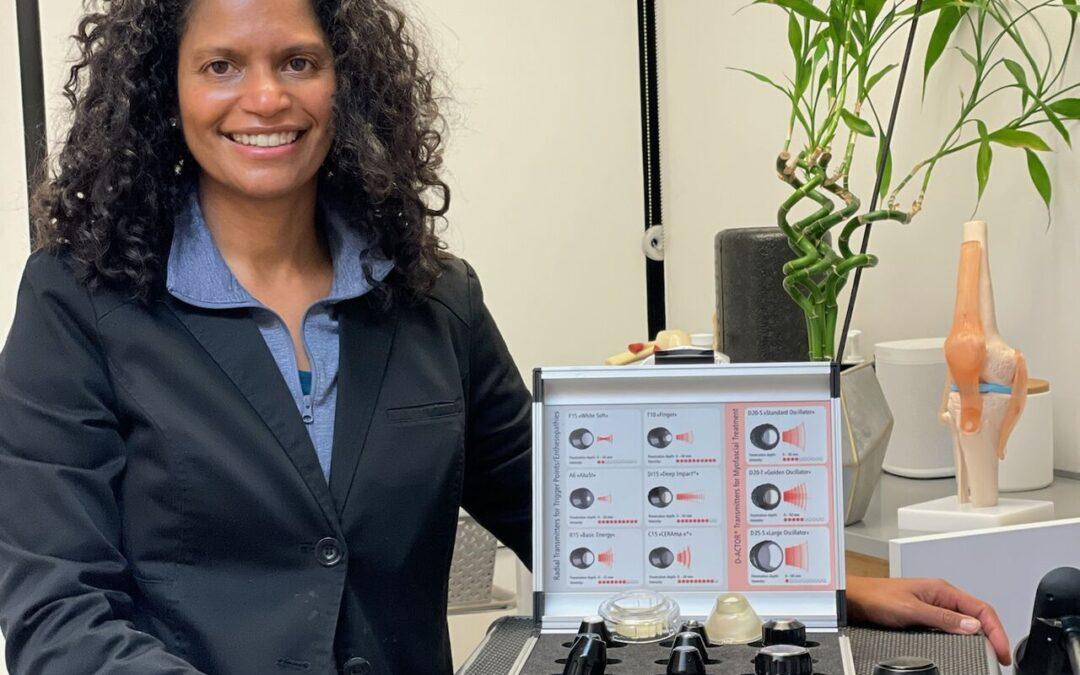As medical advancements evolve, patients have several options for pain relief and treatment. One such groundbreaking treatment is shockwave therapy. With the rising concerns regarding the risks associated with surgeries and prolonged recovery periods, Shockwave Therapy emerges as a beacon of hope for those seeking safer alternatives.
What is Shockwave Therapy?
Shockwave therapy is a non-invasive treatment using high-energy acoustic waves (shockwaves) to initiate a healing process in painful spots of the musculoskeletal system. This technology, although advanced, is rooted in simplicity: it enhances the body’s intrinsic ability to heal without resorting to external surgical interventions.
The procedure entails directing focused shockwaves to the affected area, which can be muscles, tendons, ligaments, or even bones. These waves instigate increased blood circulation and cell regeneration and even break down calcified tissue, all contributing to a swift healing process.
The Minimal Risks of Shockwave Therapy
The beauty of Shockwave Therapy lies in its safety. Surgery, though often effective, can pose risks – anesthesia complications, infections, prolonged recovery periods, and the potential for surgical mishaps. Each of these concerns can be stressful for patients.
With shockwave therapy, the scenario changes dramatically:
Non-Invasive: No cuts, no stitches. This means a drastic reduction in the risk of infections.
No Medication: Often, post-surgical recovery requires painkillers or antibiotics. Shockwave Therapy eliminates the need for such medications, thus sidestepping potential side effects.
Immediate Resumption of Activities: Unlike surgery, where recovery could mean weeks or months of downtime, Shockwave Therapy allows patients to resume their daily activities almost immediately.
Economic and Temporal Efficiency
The economic burden of surgery is multi-faceted. It’s the procedure, pre-surgical diagnostics, post-op care, medications, and potential physiotherapy sessions. Then there’s the intangible cost: time. Recovery from surgery can remove one from their daily life, work, and passions for extended periods.
Shockwave therapy offers a respite from both these burdens:
Fewer Sessions Required: A shockwave therapy treatment plan typically consists of several short sessions over weeks.
Outpatient Procedure: There’s no hospital stay involved. Each session lasts 20-30 minutes, and patients can leave right after.
The Versatility of Shockwave Therapy
While surgeries often focus on specific problems, shockwave therapy boasts a broad application spectrum. This therapy offers relief, whether it’s chronic pain conditions like plantar fasciitis and tennis elbow or more acute concerns like calcified shoulders and heel spurs. Moreover, it’s been successfully used to treat:
- Erectile Dysfunction: By improving blood flow.
- Cellulite: By breaking down the fat deposits.
- Heart Conditions: Enhancing blood flow can aid in myocardial revascularization.
The Science Behind Shockwave Therapy: From Research to Real Results
With shockwave therapy, numerous studies validate its efficacy. Research has shown that the shockwaves lead to the release of angiogenic factors, instigating the formation of new blood vessels. This, combined with the removal of inflammation and the stimulation of collagen, leads to tissue repair.
Furthermore, by breaking down calcified fibroblasts, shockwave therapy reverses chronic inflammation. This process treats the symptoms and often addresses the root cause of the pain or dysfunction.
Discover the Future of Pain Management at Avid Sports Medicine, San Francisco
Avid Sports Medicine is dedicated to bringing its community the latest and most effective treatments. Shockwave therapy might be the answer for those who’ve been on the fence about surgeries or are seeking alternatives that prioritize safety and efficacy. So, why wait? Experience the difference and book your appointment with us today. Your journey towards a pain-free life might be just a shockwave session away.

